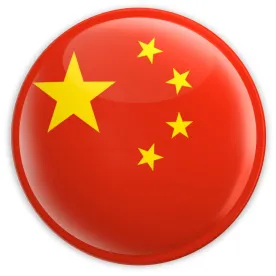At the U.S.-China Summit in Mar-a-Lago in April, President Trump and President Xi agreed to set up a new four-track dialogue mechanism to replace the previous Strategic and Economic Dialogue established between China and the United States under the Obama Administration. This mechanism allows the two governments to conduct more specialized and higher-level discussions along four different tracks: 1) Diplomatic and Security Dialogue; 2) Comprehensive Economic Dialogue; 3) Law Enforcement and Cybersecurity Dialogue; and 4) Social and Cultural Issues Dialogue.
Diplomatic and Security Dialogue
Last week, China and the United States conducted the first of the four-track dialogue mechanisms in Washington. Secretaries of State Tillerson and Secretary of Defense Mattis held a full day of meetings on June 21 with China’s State Councilor Yang Jiechi and People’s Liberation Army Chief of Joint Staff Fang Fenghui in the first session of the Diplomatic and Security Dialogue (D&SD). This dialogue was particularly significant because it raised the level of U.S.-China bilateral security discussion from the previous Undersecretary and Deputy to the Cabinet level, and came at a critical time in Asia as the two governments strive to coordinate and address a looming crisis on the Korean peninsula where the DPRK has been rapidly developing its nuclear and ballistic missile capability.
As Tillerson told the press after the session, “the most acute threat in the region today is posed by the DPRK.” He went on to say that “China understands that the United States regards North Korea as our top security threat” and urged the Chinese to “exert much greater economic and diplomatic pressure on the regime if they want to prevent further escalation in the region.” In particular, he underscored the critical role of Chinese companies in curtailing the sources of revenue to fund the DPRK’s nuclear program. Mattis stressed further that “we will continue to take necessary measures to defend ourselves and our allies.”
Tillerson also reiterated the long-held U.S. position opposing “changes to the status quo” and the “militarization of outposts” as well as “excessive maritime claims” in the South China Sea, while upholding the “freedom of navigation and overflight.” Last, and somewhat unexpectedly, Tillerson added that the administration “will stand up for American and universal values like human rights,” noting that “we would not be shy about raising our concerns about China’s human rights record” and indicated there were “direct and candid” exchanges at the meetings.
While it remains to be seen whether China would indeed be willing to enforce UN sanctions more forcefully and exert greater pressure on the North Korean regime, and how the latter would respond, it is significant that the United States was able to deliver such a strong, clear and public message at this high level at the outset of new bilateral dialogues with China under the Trump Administration. This session, taking place in the wake of the death of U.S. college student Otto Warmbier shortly upon his return to the United States after about 17 months of imprisonment in North Korea, buttressed the U.S. position demanding stronger Chinese implementation of UN-approved sanctions against the DPRK regime. It highlighted China’s responsibility in addressing this pressing crisis in the region.
The 100-Day Action Plan and the Comprehensive Economic Dialogue
Meanwhile, China and the United States also made some progress on the economic front with an agreement in May on a 100-Day Action Plan (the Plan) as part of the Comprehensive Economic Dialogue (CED). For the United States, the key deliverables included an agreement to allow the resumption of U.S. beef exports to China (suspended since 2003 due to concerns about mad cow disease) and further opening of the financial market to wholly-owned U.S. companies engaged in credit rating, electronic payment and bond underwriting services by July 16, 2017. The Plan also calls for expediting the safety evaluation of eight pending U.S. biotechnology product applications and the eventual granting of certificates, if and when approved.
For China, the Plan would permit the export of China origin cooked poultry to the United States as soon as possible and the eventual import of liquefied natural gas (LNG) into China from the United States. The United States also committed to assuring the normal operation of Chinese financial clearing houses and banking institutions in the country. Finally, the United States agreed to send a U.S. delegation (led by the NSC Senior Director for Asia) to the Belt and Road Forum in Beijing in May as a symbolic gesture acknowledging the importance of China’s Belt and Road initiative.
With the completion of this “early harvest” Plan, China and the United States thus began the process of addressing some issues in the bilateral trade and investment relationship. While some have noted that the Plan merely completed negotiations begun years ago under previous administrations and raised questions about implementation, the Plan nonetheless represented substantive progress in bilateral economic relations. The two governments have announced that they will be meeting later this summer to work on a One-Year Action Plan at the inaugural session of the CED that will be headed by U.S. Treasury Secretary Mnuchin and Commerce Secretary Ross on the American side and by Chinese Vice Premier Wang Yang on the Chinese side. It is expected that US Trade Representative Lighthizer will eventually assume a leading role in this process as well.
Good Start but Difficult Challenges Ahead
Most analysts acknowledge that developments in U.S.-China relations since the Mar-a-Lago summit have been surprisingly positive in contrast to election campaign rhetoric vis-à-vis China particularly from candidate Trump himself. The early convening of the D&SD in Washington and the completion of the 100-Day Action Plan are generally seen as a good start in addressing the broad and longstanding issues in U.S.-China relations. From the Chinese perspective, this has certainly been a most welcome turn of events, especially with respect more broadly to the U.S. administration’s reaffirmation of its “One China” policy vis-s-vis Taiwan.
At the same time, however, there are critical challenges ahead that will be very difficult to resolve and may pose future problems for U.S.-China relations. In the case of the bilateral security discussion at the D&SD, for example, while there was stated agreement on the ultimate goal of a denuclearized North Korea, there are still important differences between China and the United States on how to bring that about. The key issue for the United States is whether China will in fact begin to implement fully the UN sanctions by taking stronger enforcement actions to curb smuggling across the border and to prevent Chinese companies and individuals from doing business with designated North Korean entities. Doing so will incur risks for China in terms of antagonizing the DPRK regime as well as imposing constraints and costs on Chinese companies. It is also unclear as to how the DPRK regime will respond to increased pressure.
Meanwhile, as Madame Fu Ying, former Vice Foreign Minister and currently Chairperson of the Foreign Affairs Committee of China’s National People’s Congress, wrote in a Brookings article in May, China continues to argue that the United States needs to “address the DPRK’s legitimate security concerns,” without which China “has no leverage to convince this foreign nation to stop its nuclear program.” Specifically, China has put forth a “double suspension” proposal in which the DPRK would agree to suspend nuclear and ballistic missile tests in exchange for a suspension of U.S.-Korea military exercises in the south. At this point, insofar as this proposal appears to be a non-starter for the Trump administration, the two sides continue to be at an impasse. Unless the Chinese show concrete evidence of applying “much greater economic and diplomatic pressure on the regime” and the DPRK responds by suspending its nuclear and ballistic missile tests, as Tillerson said, it appears that the two sides will not be able “to prevent further escalation in the region.” This could result in the United States unilaterally imposing secondary sanctions against Chinese companies and individuals seen as violating the UN sanctions.
As for the 100-Day Action Plan, as many have pointed out, it clearly does not go very far to address the broad and fundamental issues in our bilateral economic relations over the past couple of decades. For the United States, these issues include, for example, Chinese currency control policies, predatory pricing and dumping practices, widespread IPR violations, government subsidies and interference in the market, forced technology transfers, and general market access imbalance that have contributed to the current massive trade deficit with China. President Trump recently signed an executive order to initiate a government review of “unfair trade practices” as well as two memoranda to initiate Section 232 review of the impact of steel and aluminum imports on U.S. national security that could have an impact of U.S.-China trade relations.
More recently, American companies have also expressed increasing concerns about China’s failure to follow through on market reforms and the continued pursuit of industrial policies that aim to provide tens of billions of dollars of government financial support to promote “national champions” in designated advanced technology sectors, as laid out in part in the recently-published “Made in China 2025” State Council report. In light of the dramatic growth of Chinese foreign direct investments and acquisitions in the United States, there are increasing calls for establishing some form of “reciprocity” in bilateral investment relations. The upcoming Comprehensive Economic Dialogue will need to begin addressing these challenges and to come up with some results.
In sum, it is significant that China and the United States have quickly begun to engage actively to address key security and economic issues in the bilateral relationship under the new Trump administration. While some progress has been made, difficult challenges still lie ahead.




 />i
/>i

